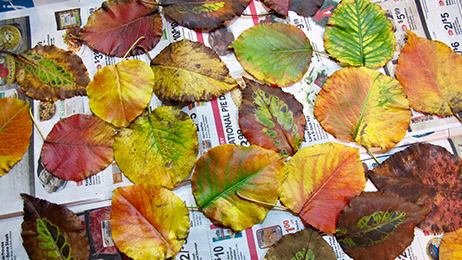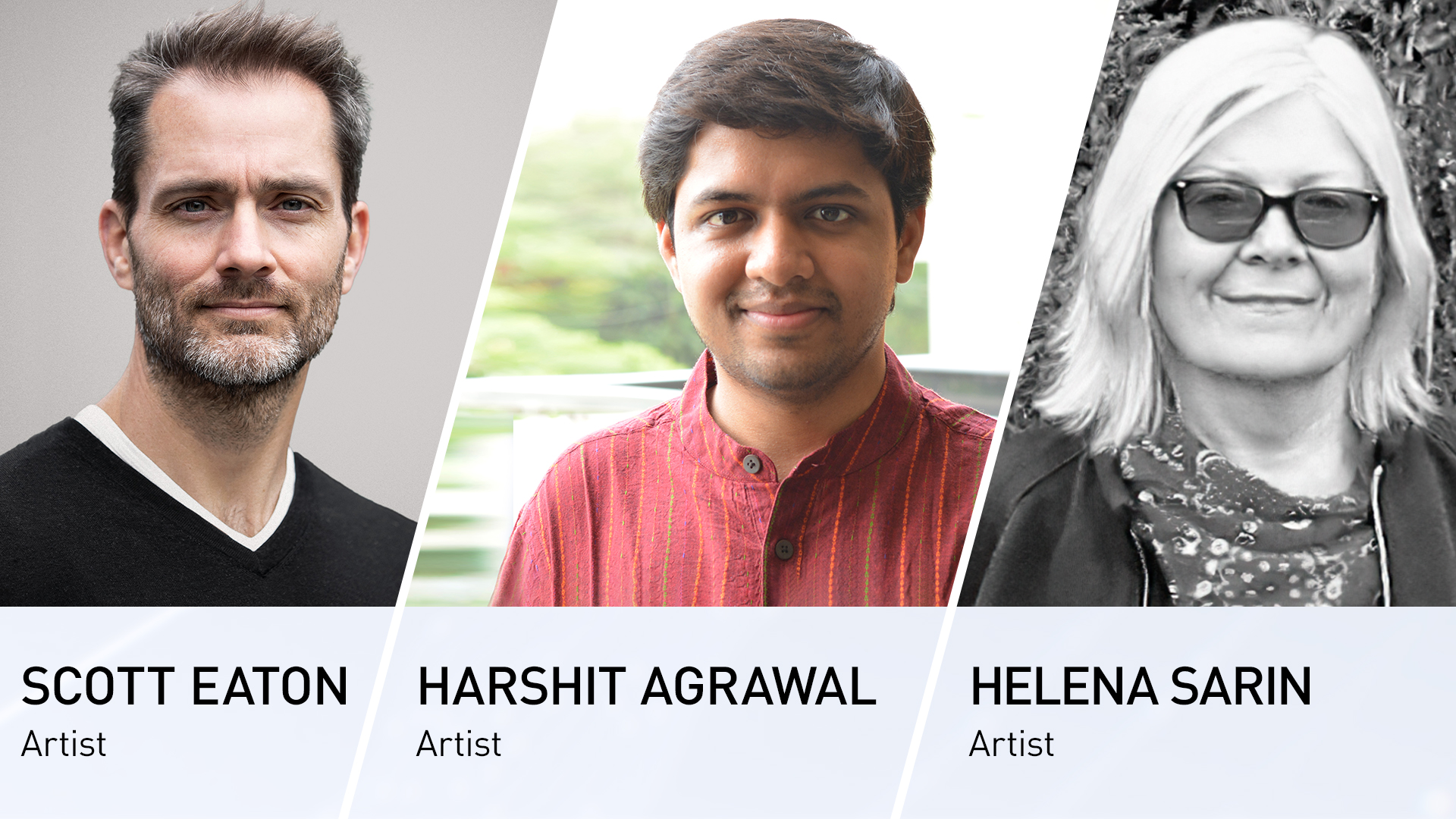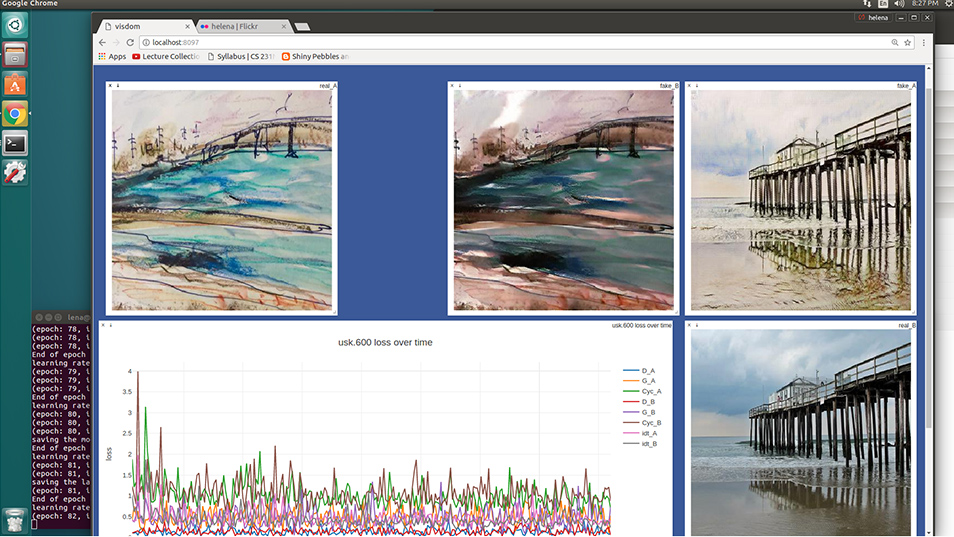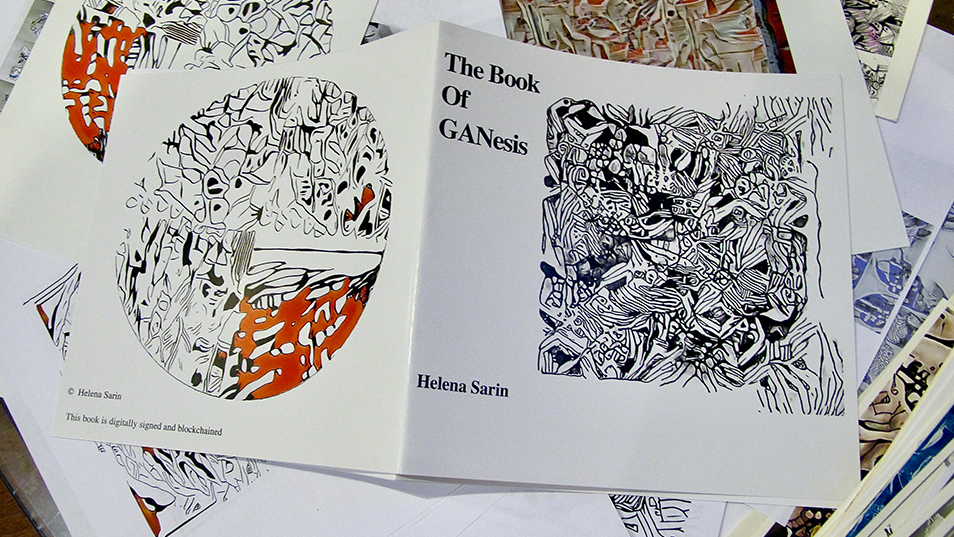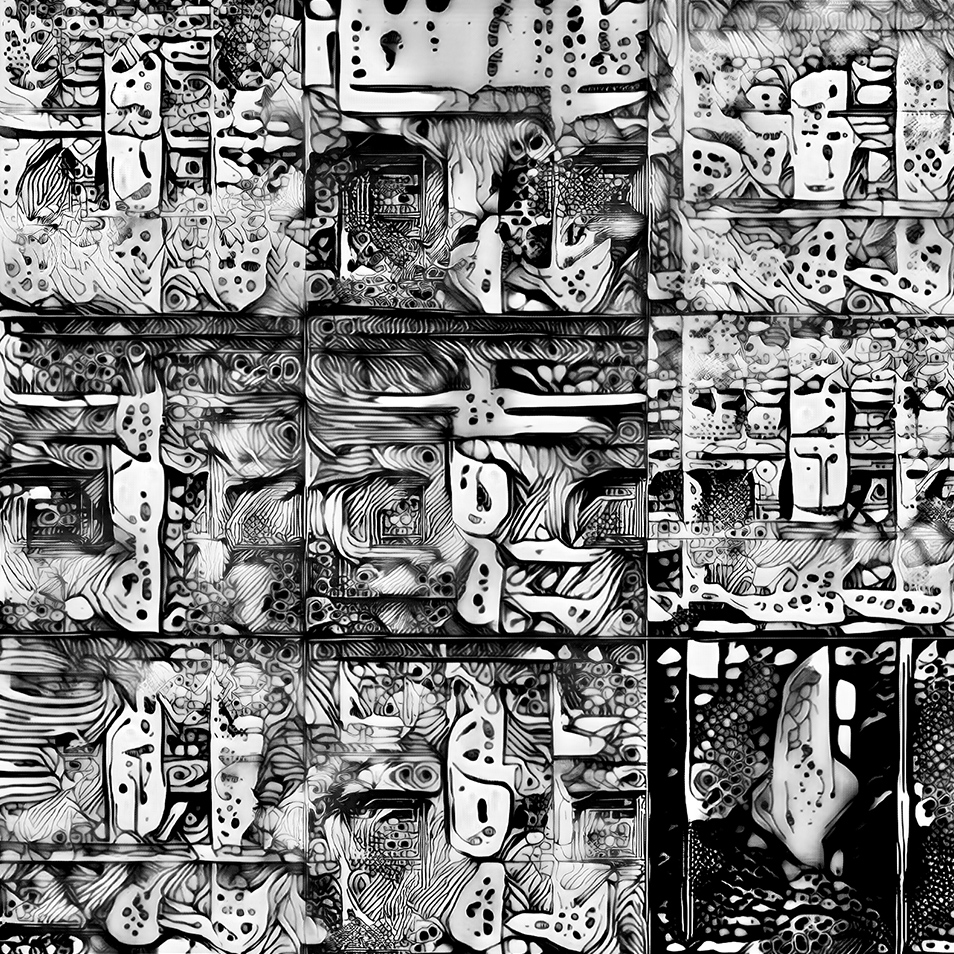The Leaves of Manifold artists’ book distills more than two years of training GAN models on datasets of photos of flowering pear leaves, maple, and sweetgum leaves. The book format lets her showcase many generated images at once, in their beauty and/or goofiness. Adding words gives the imagery additional dimension. Helena’s books invite the viewer to look at the book as a collage—of words and images, of pages—sometimes linear, but inside could be intuitive, counter-intuitive, or absurd. This title plays on the Leaves of Grass poem by Walt Whitman.
Leaves of Manifold
Helena Sarin
2020-2021 / Generative Mixed Media
As a visual artist and software engineer, Helena finds inspiration in unifying patterns of nature and computation. She uses Generative Adversarial Networks (GANs) that reveal some of these patterns and reassembles them in intriguing ways. She strives for her generative artwork to be not only interesting and aesthetically pleasing, but to reflect the characteristics of her analog art—improvised, bold, and deeply personal.
The Process

Helena Sarin
Visual artist and software engineer Helena Sarin has always worked with cutting-edge technologies for tech companies. At the same time, she has done commission work in watercolor and pastel, as well as in the applied arts like fashion, food, and drink styling and photography. But art and software ran as parallel tracks in her life, all her art being analog, until she discovered GANs (Generative Adversarial Networks). As part of her postGANnism approach for the last couple years, she’s exploring how AI can be used as a tool to create physical artifacts. She’s been making artists’ books—The Book of GANesis was immediately sold out, her GANcommedia Erudita was exhibited at NVIDIAs fall 2020 GTC, and today she’s working on The Book of veGAN. To complement the veGAN pun, Helena also is experimenting with what she calls the potteryGAN—to use GAN inference as the design for functional clayware.
Twitter | Instagram
Featured Sessions
A Conversation with Artists Using AI
This panel discussion with the GTC AI Art Gallery artists, Daniel Ambrosi, Refik Anadol, and Helena Sarin will explore their personal journeys that led to connecting AI and fine art, how the technology has influenced their artistic process, why AI is important in the broader field of fine art, how art education intersects with AI education, and whether AI will be capable of achieving autonomous control over the creative process.

